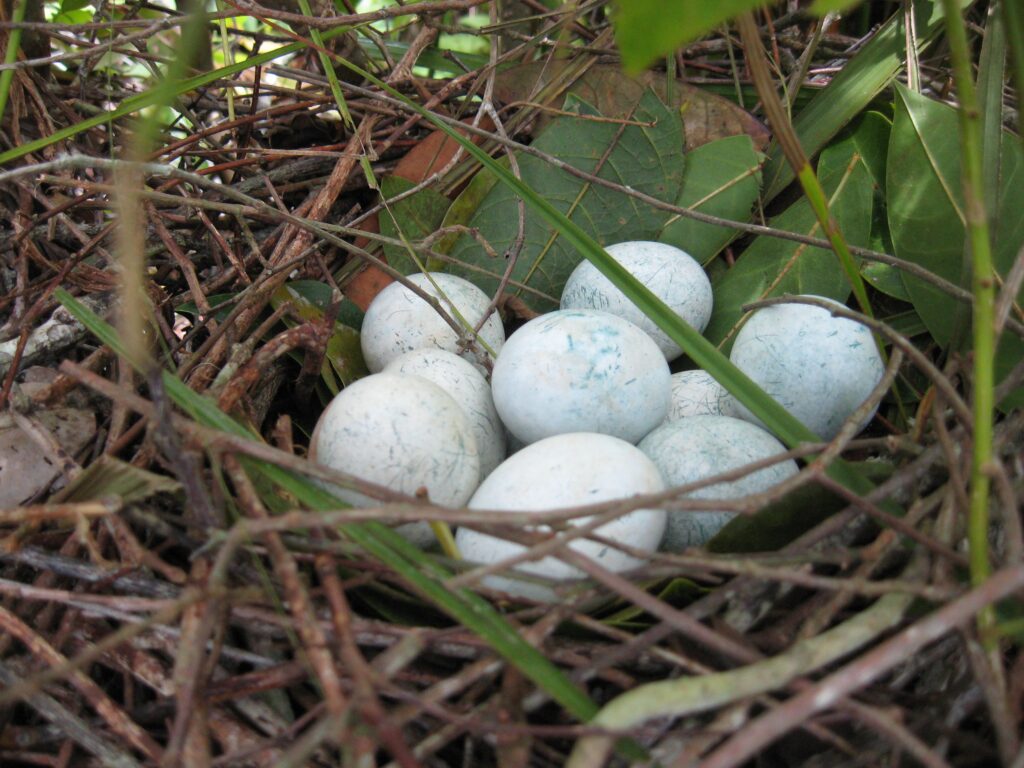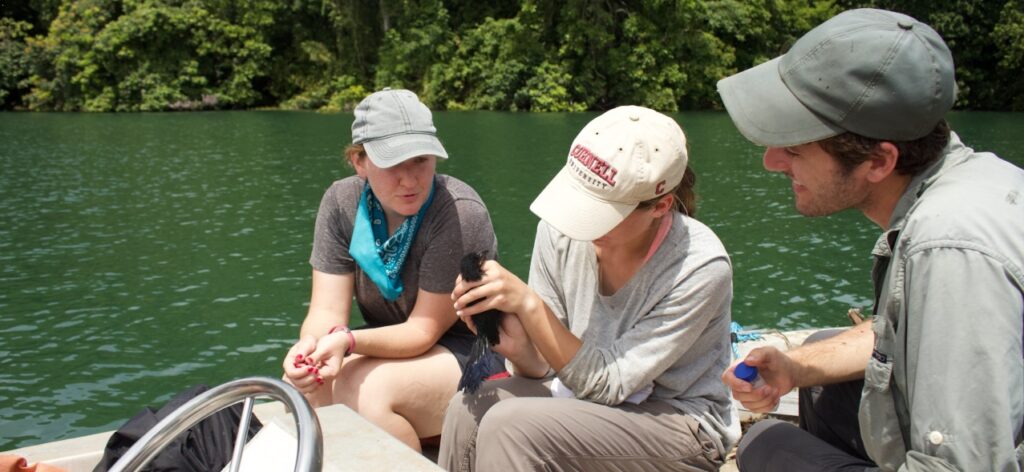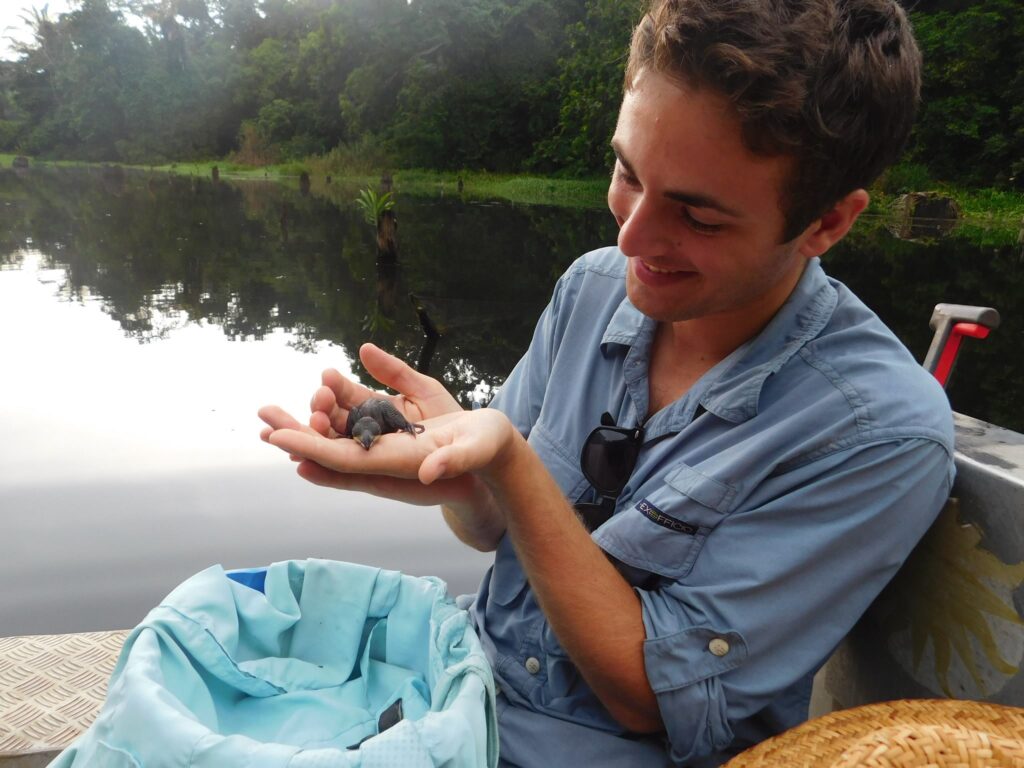Tropical birds may skip breeding when hot, dry conditions persist
During the past several years, ecologists have warned that prolonged periods of drought may be leading to declines in tropical bird populations by reducing reproductive success in adults. Now, Princeton researchers report that some tropical birds may not only be less successful at breeding during hot and dry periods — they may skip reproducing altogether.
The researchers tracked the breeding patterns of the greater ani (Crotophaga major) during the past 12 years to understand how reproduction was influenced by the El Niño-Southern Oscillation (ENSO). The study was based on the researchers’ own fieldwork in Panama, where ENSO tends to result in drier, hotter conditions. They report in the Journal of Avian Biology that ENSO dramatically reduced the likelihood of breeding and the annual reproductive rate.
The study is one of the first to provide long-term, individual-scale data on how the reproductive habits of tropical birds are affected by climate, said corresponding author Christina Riehl, an assistant professor of ecology and evolutionary biology and associated faculty in Princeton’s High Meadows Environmental Institute (HMEI). The study was supported by Riehl’s HMEI Water and the Environment Challenge project, “Effects of El Niño Rainfall Patterns on the Population Dynamics of a Tropical Forest Bird.”
“Previous studies conducted on several dozen different tropical bird species have suggested that adults are able to survive periods of drought, but they may reproduce less frequently,” Riehl said. “Our results support this hypothesis, but we provide more concrete evidence because we were able to track specific individuals and show that they indeed skip breeding in dry years. Previous studies had only provided indirect support at the population level.”


“The probability of skipped reproduction is a major component of the demographic models used for the conservation of large seabirds, but has, until recently, received little attention in small tropical forest birds,” said first author Zachariah Smart, who graduated from Princeton in 2019 and worked on the project for his senior thesis research with support from the HMEI Environmental Scholars program.
“We really don’t know which way the impacts of skipped reproduction will swing in a changing climate — whether it is adaptive or detrimental,” he said. “The hope is that others will now be able to ask those questions in other species.”
Many climate models project that El Niño events will become more common in the future, and other models predict that the tropical regions of Central and South America will become increasingly hot and dry, regardless of El Niño, Riehl said. It’s important for scientists to understand how this changing climate might impact animal populations, and through their interactions, the entire ecosystem.
“If the effect of climate on breeding that we saw is true for other species, the resulting effect on biodiversity would be bad news,” Riehl said. “One would expect that El Niño events, or dry conditions in general, would lead to reduced reproduction and population-level declines in many species of tropical forest birds, not just greater anis.”
Smart, Riehl and co-author Maria Smith, a graduate student in ecology and evolutionary biology, worked at the Smithsonian Tropical Research Institute station on Barro Colorado Island, Panama, locating greater ani nests and tracking whether and when the birds bred, how many eggs they laid, and whether their nesting attempts were successful. Collecting these data required the researchers to get up close and personal with the birds.
“We were exploring waterways from a small boat, often with a ladder perched precariously on the prow, reaching in to nests to check their contents and trying to balance as the parent birds dive-bombed our heads,” said Smart, who also worked on the project as an HMEI environmental intern during his freshman and sophomore years.


“One of the most thrilling parts of this research, though, was reading deeper and deeper into the literature and realizing that these references we saw to the number of active nests being much lower one year, or to a given pair producing no offspring in another year, added up to a comprehensive picture of skipped reproduction as a really common response to adversity in tropical birds,” Smart said.
“This was happening not just in arid or dry forest environments, where it is well-known, nor just for frugivorous [fruit-eating] birds, but in deep rainforest where life is so abundant it seems like food-availability couldn’t possibly be limiting,” he said.
Greater anis are a long-lived (15-20 years) species that lives in the understory of Panama’s tropical forests. The birds are primarily insectivorous and notable for being cooperative breeders, meaning that multiple pairs share nests and rear their young as a communal group. But anis have much in common with other understory forest birds in Panama and so it’s possible that other birds interact with climate events in similar ways.
During the 12 years the project covered, Panama experienced several years of El Niño and its cool-temperature counterpart La Niña. The long-term nature of the Princeton study allowed the team to directly compare breeding rates and success during different climate conditions.
Individual birds were less likely to breed during El Niño years, but were equally likely to breed during La Niña and neutral years. For instance, only 37.5% of adult birds attempted breeding in 2015, the most severe El Niño year in the study, compared with 90.2% of adults that bred in 2017, which experienced neither El Niño nor La Niña. Interestingly, there was no correlation between ENSO and the number of eggs laid, nor the likelihood of a successful nesting. On average, birds that bred laid the same number of eggs and their nestlings were equally likely to fledge, regardless of the year.


The exact physiological reason why birds skip breeding during dry, hot years remains unknown, but the researchers pointed to a few possible explanations. The first is that insect abundance in tropical forests is thought to be associated with rainfall, so there might not be enough prey available during El Niño years to support reproduction.
Another possibility is that the seasonal climatic cues that initiate reproduction may be weaker or absent in El Niño years. Many birds, including greater anis, switch off their sexual organs during the non-breeding season. As breeding season approaches, climatic cues such as photoperiod and increased rainfall tell their bodies that it’s time to initiate breeding again.
No matter the mechanism, the fact that greater anis are skipping breeding during certain years could have a ripple effect on the rest of the Panamanian forest ecosystem, Riehl said. Greater anis eat large insects and are themselves — particularly nestlings — eaten by several species of snake and predatory bird. In years when there are fewer anis, this would mean less predation pressure on insects, and less food available for nest predators.
The paper, “The El Niño-Southern Oscillation dramatically influences the probability of reproduction and reproductive rate of a tropical forest bird,” was published online in advance of print June 9 by the Journal of Avian Biology.
This work was supported by the Smithsonian Tropical Research Institute; the Harvard Society of Fellows and the William F. Milton Fund at Harvard University; Princeton’s Department of Ecology and Evolutionary Biology and the Program in Latin American Studies; the Grand Challenges Program, Environmental Internship Program, and the Smith-Newton Environmental Scholars Program in Princeton’s High Meadows Environmental Institute (HMEI); and the National Science Foundation.




